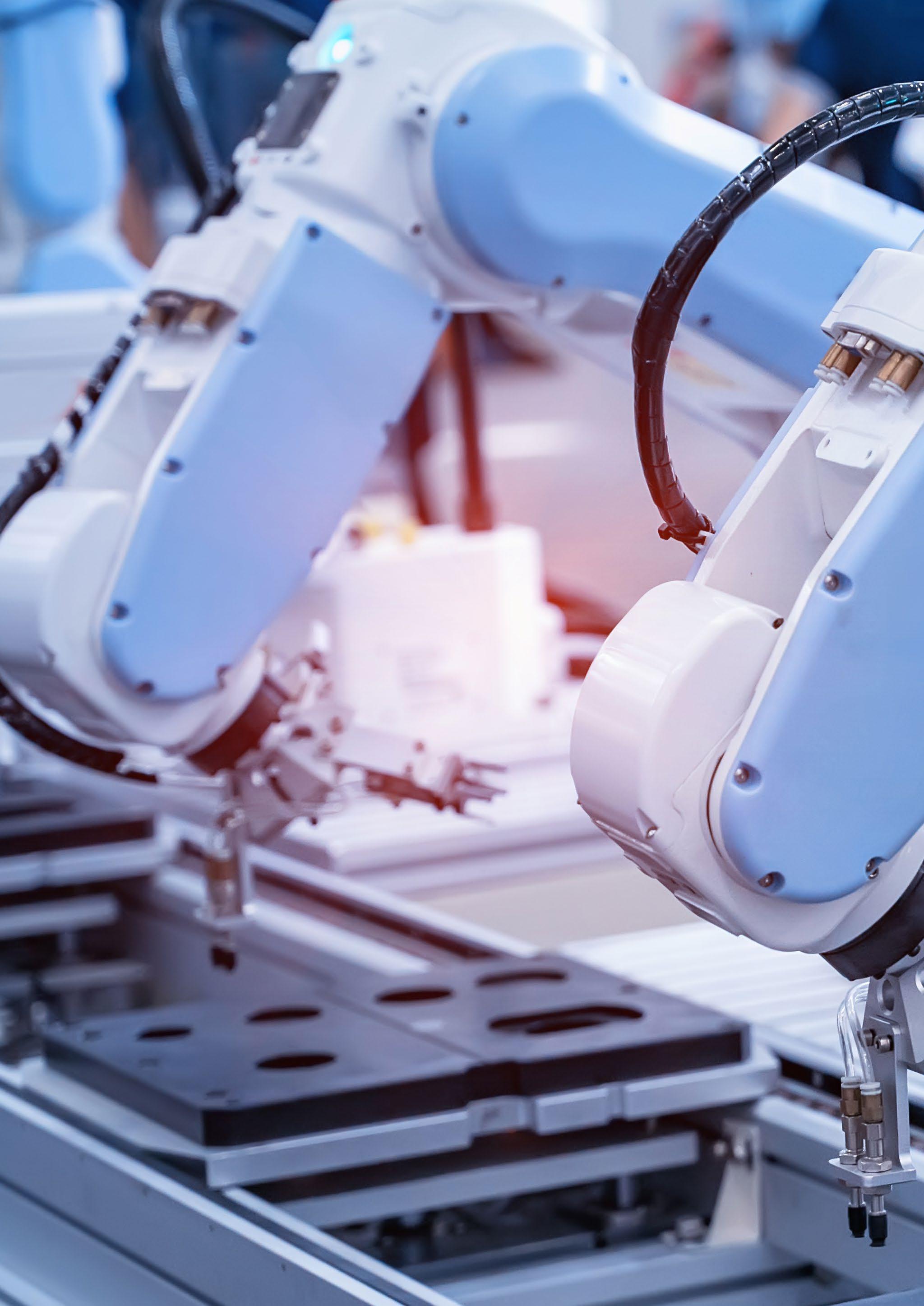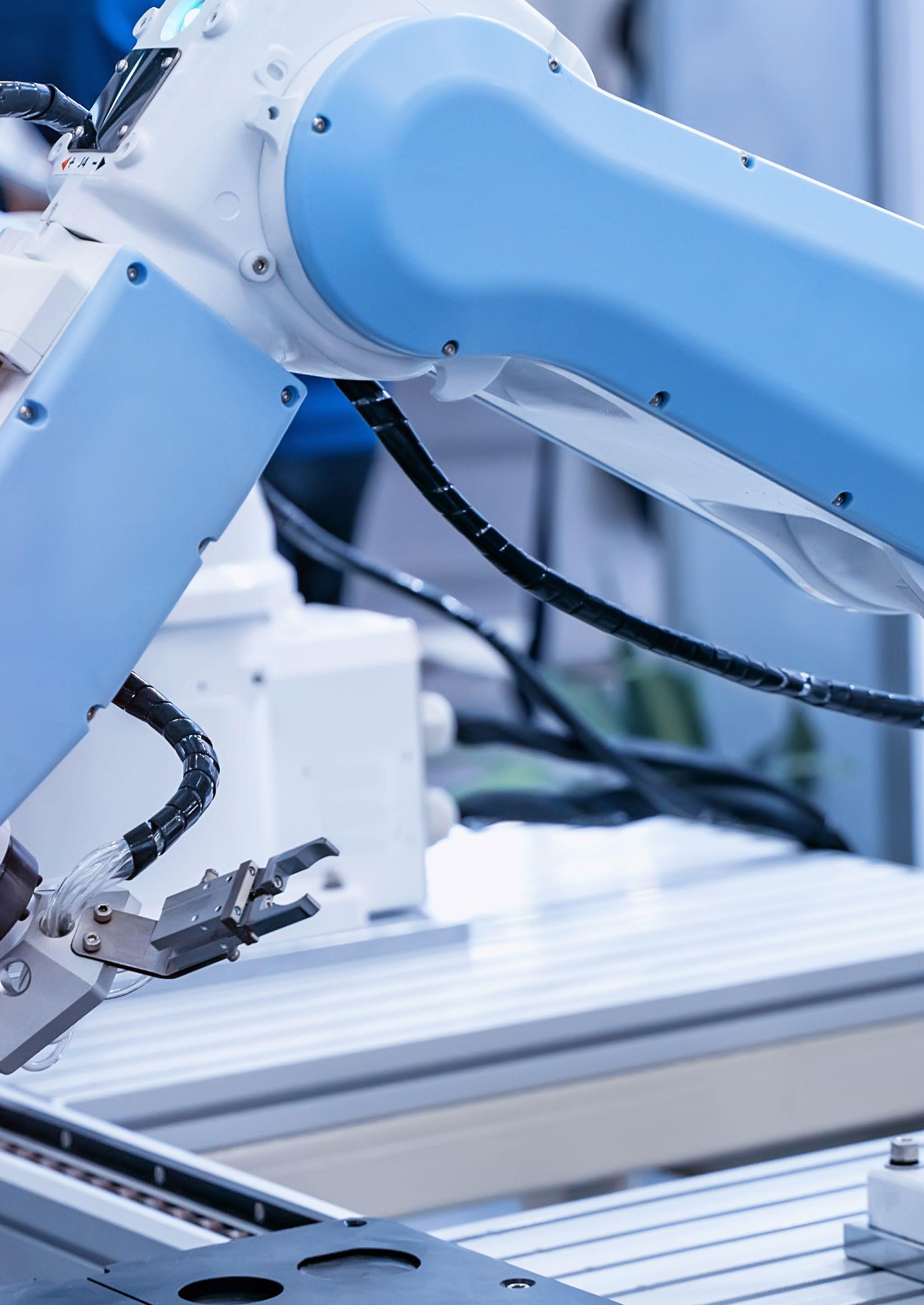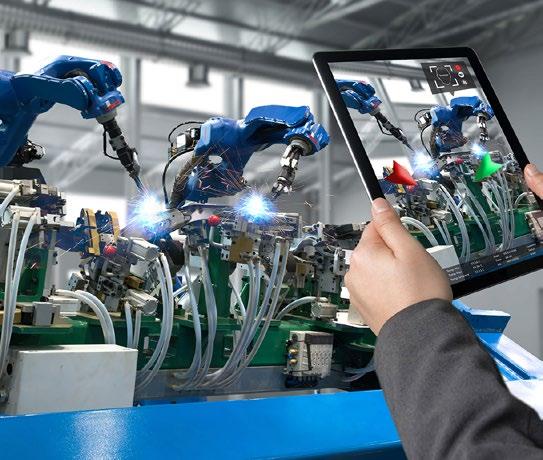
3 minute read
THE ‘CONNECTED WORKER’ CAN STOP THE UK’S SKILLS DRAIN
Augmented reality and artificial intelligence can ensure knowledge is passed on to next-gen employees.
The rise of the ‘connected worker’ could help end the skills drain being accelerated by an ageing workforce, according to the boss of one of the world’s leading providers of industrial innovation technology.
Advertisement
PTC’s President and CEO Jim Heppelmann believes the use of Augmented Reality (AR) and Artificial Intelligence (AI) can protect the knowledge and expertise of retiring workers by training next-gen and existing employees.

The chief executive of the company, which has its UK offices in Farnborough, pointed to an increased uptake in the number of companies investing in AR as a way of protecting traditional skills and securing IP.
In its simplest sense, PTC’s Vuforia Expert Capture lets experts record a task as they carry it out using a wearable device, such as Microsoft’s HoloLens. The content is then turned into a step-by-step video guide with instructions for other workers to follow through the wearable tech - locking valuable skills in place forever.
“The terms Artificial Intelligence and Augmented Reality automatically conjure up images of robots taking human jobs - well the ‘connected worker’ paints a completely different picture,” explained Heppelmann, who has spoken across the globe about the importance of embracing digital technology in manufacturing.
“One of the biggest threats to UK industry is an ageing workforce, with recent data from the European Labour Force Survey revealing that 16 per cent of the total EU workforce is aged 55 or older. There is a real danger that these experts will retire before the next generation has had the chance to learn from them.”
Heppelmann continued: “This no longer needs to be the case. Adoption is growing thanks to the ability to combine AR and AI to offer cost-effective solutions to manufacturers, not to mention a change in mindset from industry, who have now realised the importance of investing in businessready software and hardware.
“We have countless examples of small, medium and large firms that are embracing ‘connected worker’ technology to protect knowledge when workers retire, to reduce the costs of onboarding new employees and even the ability to quickly reskill and cross train existing staff.
“I can only see this trend continuing, especially as we see technology and platforms mature to meet the requirements of the modern-day manufacturer. These technologies can bring the superpower of computing into the arms and legs of the workforce.
“According to the recent PwC ‘Seeing is Believing’ Report, wider adoption of VR and AR is going to add £1.5trillion to the world economy over the next ten years. It’s not something businesses can ignore any longer.”
Augmented Reality is still a relatively new technology, with its use in industry only dating back five years ago.
Previously, it has been used mainly to enrich static views by information being overlaid on to reality, but now new functionalities are being developed and rolled-out over the next 12 months.
This will overlay information dynamically and, using low-cost or high-quality glasses, enabling nearly every industrial application imaginable to benefit from Augmented Reality.


Heppelmann concluded: “Augmented Reality is one of the most effective user interfaces ever developed, but it isn’t that useful if it never makes it out of R&D as a true off-theshelf business tool.
“PTC is heavily investing and working hard to ensure that organisations can leverage the additional technologies related to the Internet of Things (IoT), Product Lifecycle Management (PLM) and Generative Design, ultimately leveraging the full spectrum of what Industry 4.0 has to offer whilst also ensuring people are at the centre of Digital Transformation.” MV



